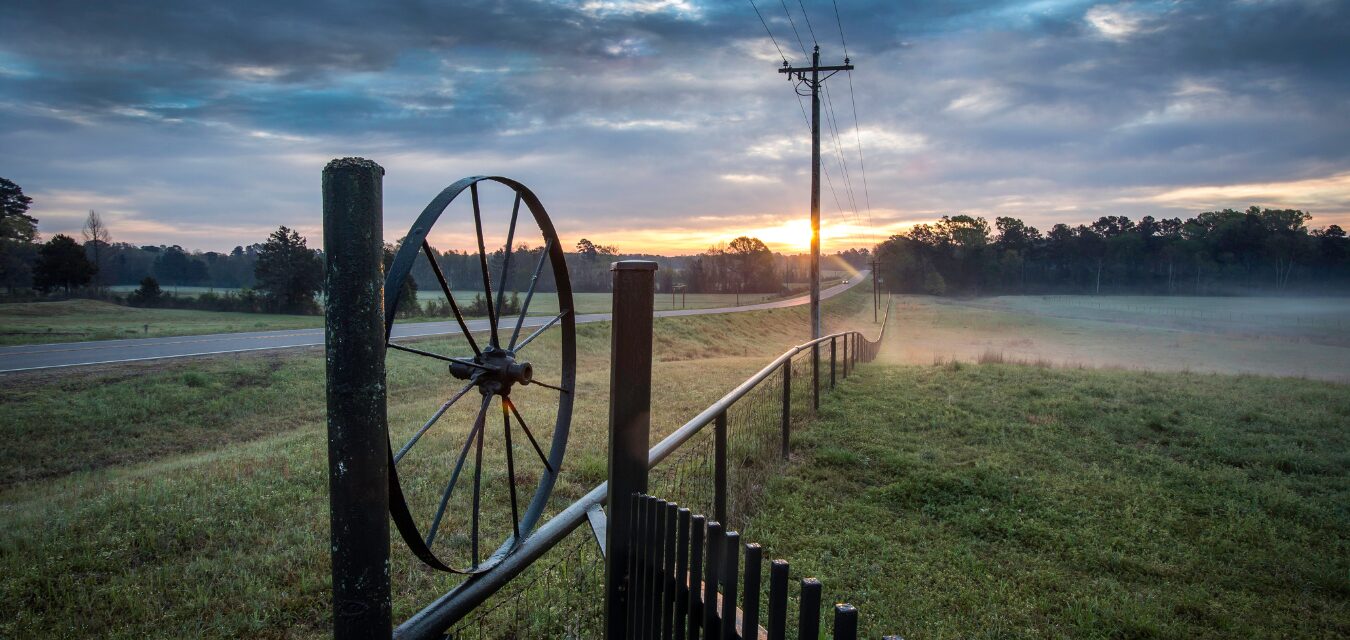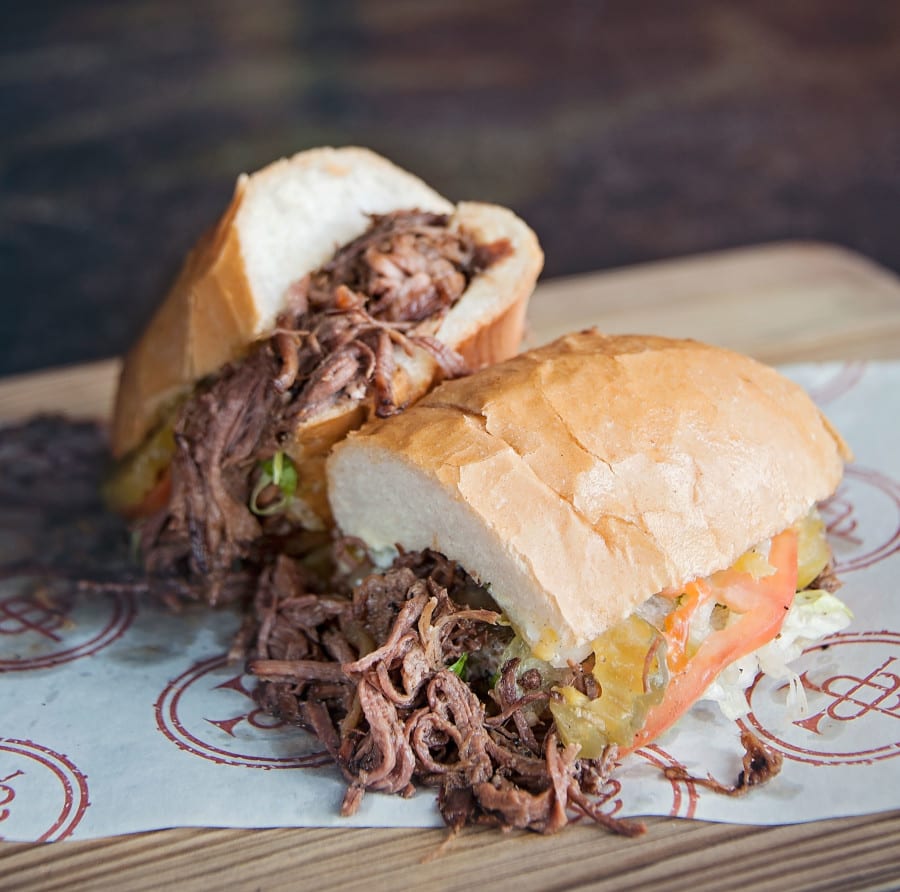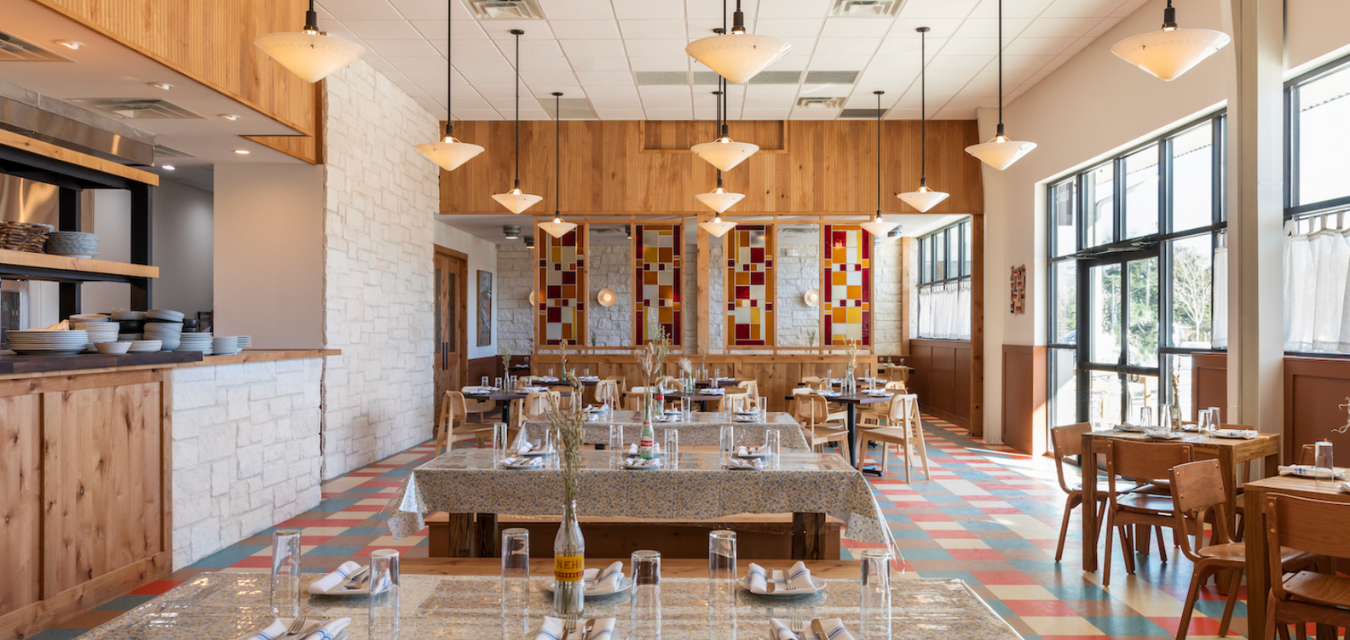Take a drive through No Man’s Land on a trip through Louisiana and East Texas
The speed limit outside of Jefferson, Texas, is an act of generosity, if not an invitation to recklessness: As far as I’m concerned, only someone with a death wish would fling themselves down the two-lane ribbon of Texas Highway 49 at 70 miles an hour. Louisiana is not generally known for its foresight and sobriety, but once you cross the border, the legal speed drops to a far more staid and comforting 55 miles an hour. I guess everything, as they say, is bigger in Texas.

So while the border between these states may be just a brief flash of road signs, the change feels clear.
The outer boundaries of “the South” are a worthy topic of barroom debate. I find Texas to be a blurry edge, halfway in and halfway out. The town of Jefferson, though, makes a solid case for inclusion: It’s an old steamboat port along a sleepy waterway that, in a Southern custom, is dubbed a “bayou.” Its downtown features regal brick-clad 19th-century buildings, mostly built by Southerners who pushed west seeking new fortunes planting cotton. The food I ate in town, though—tender slices of beef brisket alongside jalapeño cheese sausage, from Joseph’s Riverport Bar-B-Q—was not something I associate with Louisiana.
My quest to comprehend this miniature borderland had actually begun the night before, camped along the wild edge of Caddo Lake. My wife was out of town, and I’d decided to load up the dog and ramble through the region known as “No Man’s Land” while making my leisurely way to Houston.
The boundaries are, rather appropriately, murky, but this area—also known as the “Neutral Zone”—encompasses much of the Texas-Louisiana border. For both the Spaniards to the west and the French to the east, the piney woods presented a distant frontier; even after the United States replaced the French at the turn of the 19th century, just where the international border lay remained in dispute. Rather than go to war, though, the two parties decided to keep their armies out. So the region filled with outlaws and fugitives and runaways—seeding a sense of remote independence that persists today.
The northern edges of the region, near Jefferson, once harbored a rather swampy terrain. A hundred miles of the Red River were plugged with ancient driftwood when the first white settlers arrived; the tangle of logs slowed the river’s flow, pushing water outward, creating a vast expanse of swampland. It’s been drained mostly, though for a glimpse of the old landscape, you’ve still got Caddo Lake—42 square miles of water and water-standing cypress forest.
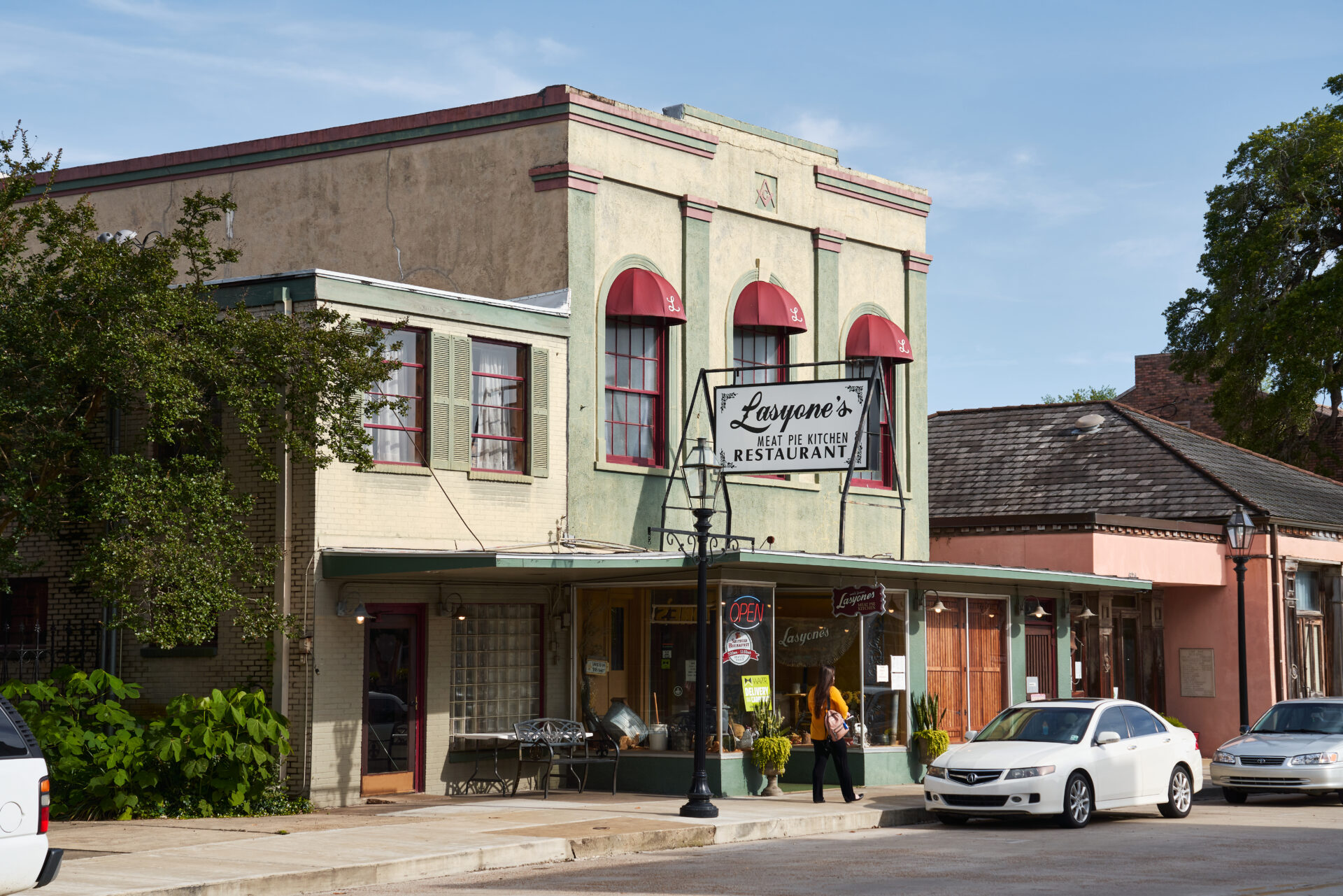
I’d hoped to charter a boat from the town of Uncertain, Texas, which struck me as an appropriate name in that the collection of RVs and abandoned restaurants seemed unsure whether it really wanted to be a town. Sadly, an unyielding bank of clouds kept me off the water. But I was happy enough to hole up inside the Caddo Lake Lighthouse, a classically dim and dingy wood-paneled country bar that serves a truly astounding hamburger—the patty carefully seasoned, the bun buttered and grilled. The next morning, at the Shady Glade Cafe, my sausage-and-egg sandwich had been pressed lovingly on a griddle. This is redneck country in the best way, a place where savvy cooks know their way around a bun.
After my barbecue pitstop in Jefferson, I crossed the border and headed toward Shreveport. I figured a comparative study of barbecue might be worthwhile, but when I asked an acquaintance where to head for the town’s best, the reply was revealing: “To Texas!”
Shreveport, it turns out, is more of a soul food town. It’s got its own dish, even, one that deserves to be far more famous: hefty shrimp, butterflied, stuffed with spicy dressing, then wrapped in a thick pillow of batter and deep-fried. Shreveport stuffed shrimp, as the dish is known, was invented at the old Freeman & Harris Cafe—which, if you can forgive a few name changes and real estate shifts, has a claim to being the oldest continuously operated Black family-owned restaurant in the country. But since its current iteration, Orlandeaux’s Café required a two-hour wait, I headed instead to C&C Cafe, where the hand-painted signage and simple concrete architecture suggested (rightly) that this is a solid old-school joint.
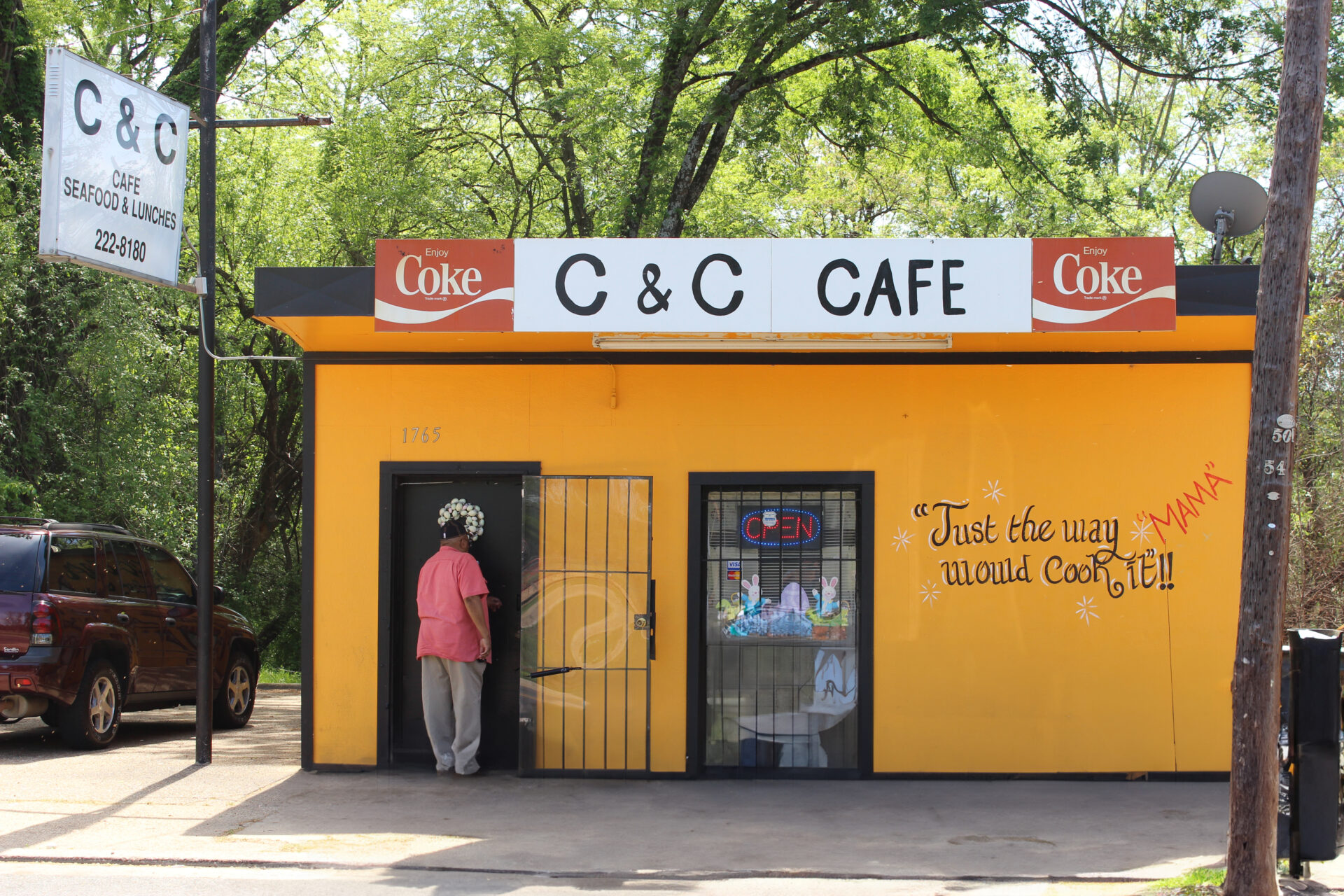
Natchitoches—which is pronounced, oddly, “NACK-a-dish”—is famous for its meat pies, a simple thing of ground beef and pork seasoned with peppers, onions, and garlic and folded inside a layer of fried dough. The roots of the recipe are suitably mysterious, given the history here: Are the meat pies a relic of the French village that was founded here in 1714—the first European settlement in the state? Or do they draw on the Spanish outpost that was established a few years later, just west?
Despite lying within what is today Louisiana, that outpost, known as Los Adaes, was for a few decades the capital of Spanish Texas. The French and Spanish were enemies on paper—Los Adaes was meant to serve as a block against further western French expansion—but they lived so far from their respective capitals that in practice they became allies. The meat pie may be the French attempt at an empanada.
Whatever its origin, my pie was the first disappointment of my trip. Really, it’s my fault. Wanting to feel salt-of-the-earth, I bought my specimen at a gas station, and the thing looked and tasted like it had just been delivered off a Sysco truck. I should have driven downtown, to Laysone’s Meat Pie Restaurant, which has been handmaking their food since 1967—and which, I know from previous experience, makes a serious pie.
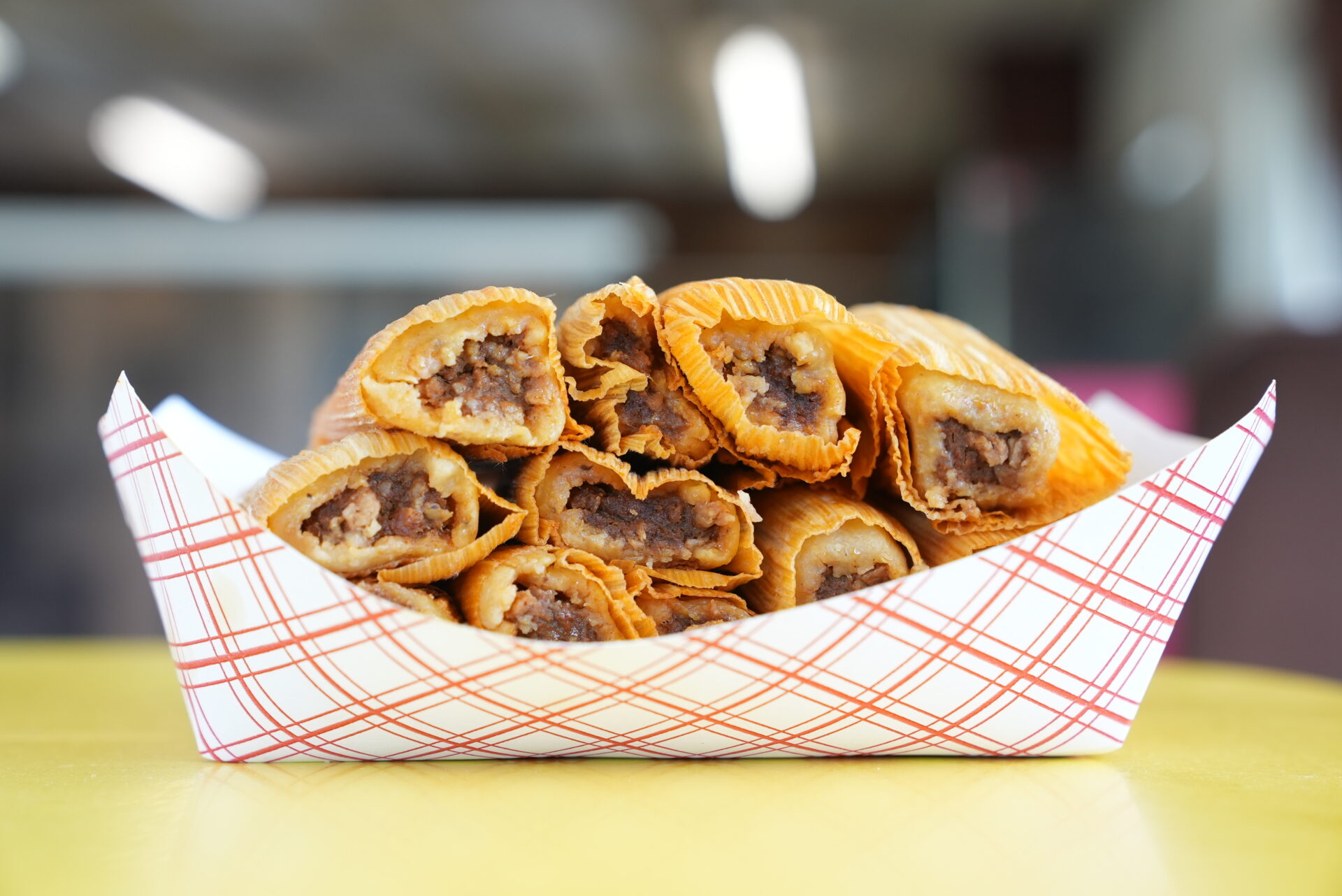
After a night camped out along a quiet bayou in No Man’s Land, I curled west toward the border town of Zwolle, Louisiana. The Dutch-derived name is now pronounced to rhyme with “tamale,” which, as it happens, is the town’s culinary specialty. Los Adaes was shuttered in the 1770s, after hostilities with the French came to an end, but some of the colonists hid out in the woods instead of moving west, as ordered. That, supposedly, is why tamales remain a common dish here, though I could not help but feel that something had been lost from the recipe through the centuries.
I crossed back into Texas along the route of the old Camino Real, the royal road that the Spaniards used to link their far-flung settlements with the heart of its Mexican colonies. Today, the highway turns into a brick main street in Nacogdoches, which was founded in the 1770s by some of the old Adaeseños. It is, by several metrics, the oldest town in Texas: the first place to be designated a “pueblo” by the authorities, back in 1779, but also a site that’s been occupied by the Caddo people for thousands of years. (The name for this town, like Natchitoches, is drawn from the name of a Caddo tribe.) Today, Nacogdoches is a drinking town in the modern style: There’s a winery, a distillery, and—my recommendation—Fredonia Brewery, a lively drinking post on the edge of downtown.
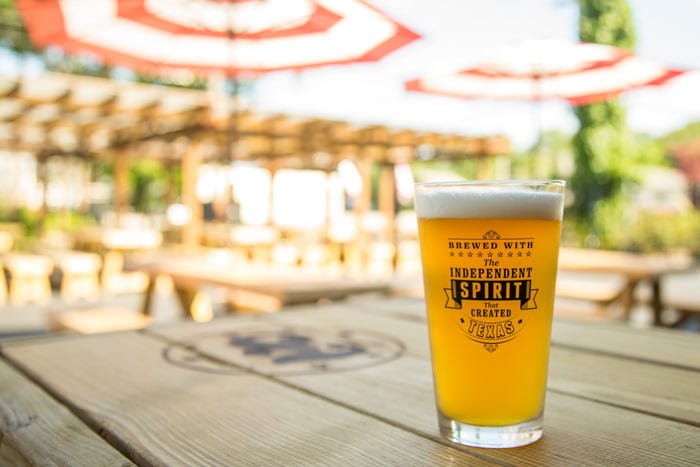
I arrived on Friday afternoon, which meant I was able to catch the tail end of the weekly bluegrass jam on the porch of the General Mercantile and Old Time String Shop. (Among the settlers who swooped into No Man’s Land in its lawless years were the same sort of Scots-Irish pioneers that are more famous for their presence in Appalachian hollers.). For dinner, though, I decided to head a half hour south to Stringer’s Lufkin Bar B Q, which has been in operation for more than 70 years.
Despite the association between barbecue and Texas, the tradition of smoking whole animals in pits was first developed on Southern plantations. It gradually bled west, alongside the settlers. That makes East Texas, in a way, the birthplace of Texas barbecue—a stopover on the food’s transition to its more-famous, brisket-centric style in the center of the state.
I’d read that in East Texas pitmasters focus more on pork—much like the rest of the South. So I was surprised to find that Paul Stringer, whose family has owned Stringer’s for all but two of its many years, conceives of a different barbecue geography. He described himself as being situated in a southern beef-centric belt. Pork was a barbecue thing farther north, he said. Nonetheless, his pork ribs are to die for. They’re simply seasoned, as Stringer told me, with little more than pepper and salt. (Another can’t miss: Stringer’s deep-fried rolls.)
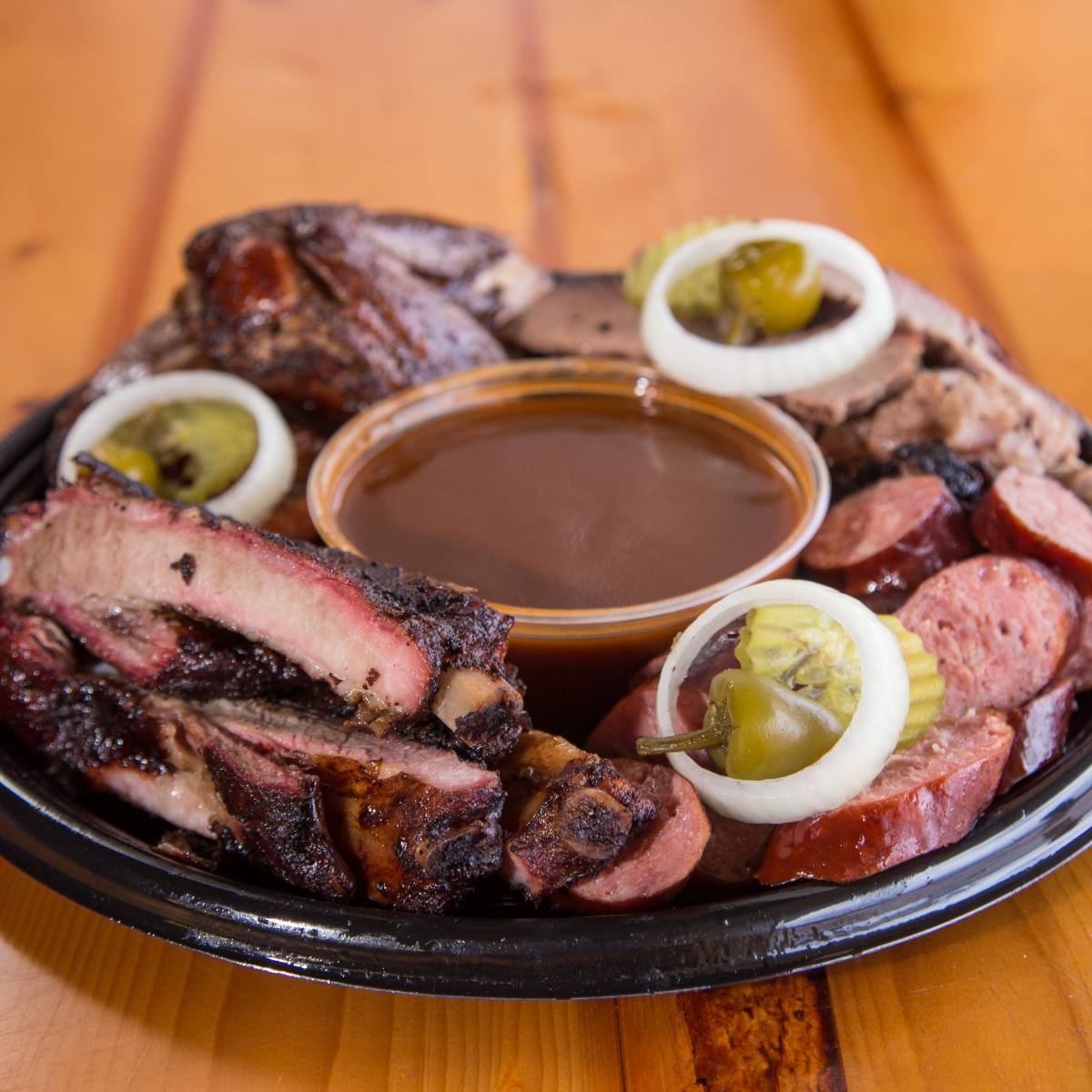
The dog and I were relieved that night for a bed—and air-conditioning—at the restored Fredonia Hotel, a historic hotel in Nacogdoches. In the morning, I fueled up for my final push with the decadent breakfast burrito downstairs at the 1st City Café. Then we delved south into a region that’s known as the Big Thicket in No Man’s Land, a tangle of dense woods and swamps. Following the recommendation of a savvy local friend, I joined the postchurch line at Jenny’s Fried Chicken in Kirbyville. The batter was light and with just the right touch of fiery cayenne, a perfect taste of small-town country cooking.
Just south, we arrived in Beaumont, Texas, a town known for its own barbecue specialty: an all-beef link sausage stuffed with a heated blend of chili powder, paprika, and garlic. Patillo’s BBQ, one of Texas’s oldest restaurants, is the originator of this dish. Because it’s closed on Sundays, I had to settle with the drive-through at the Link Link (now closed). This did not turn out to be an unhappy replacement. The Beaumont beef link is known sometimes as a “greaseball,” which in my opinion is an unfair slight to this dense and delicious creation.
An hour and a half west, Houston lies beyond any conceivable boundary of No Man’s Land, but a Southerner can find plenty of ways to feel at home here. The boudin belt jags west far enough to include this de facto capital of East Texas. At SouthernQ BBQ, for example, that very Cajun sausage is served on a menu that features both Central Texan brisket and fried catfish—and, on Sundays, as I found, Southern-style oxtail.
There are other delights in Houston, of course: I’m a fan of Crawfish & Noodles, one of several restaurants where Vietnamese immigrants have added their own flourishes to the Cajun tradition of a crawfish boil. So while the tangle of highways in Houston—the nation’s fourth-largest city—can seem like an antithesis to the rurality of No Man’s Land, as I ate I realized it was a place akin: an immigrant city, a place that takes all comers, where cultures mix and meld—and the great result is deliciousness.
keep reading
At the Table
3 Versions of One NOLA Classic: the Po’ Boy
The po’ boy gets three new versions thanks to New Orleans-native Chef Kelly English. He brings authentic NOLA cuisine with his second restaurant in Memphis.
On the Road
Houston
Houston brims with culture and cuisine. From breakfast to barbecue and Tex-Mex galore, work up an appetite for these iconic flavors.
In the Field
Houston Chef Chris Williams Carries on Tradition this Juneteenth
Chris shares with us Juneteenth memories and passes on a recipe to celebrate the holiday.
share
trending stories
-
New Restaurants in Arkansas
-
Shrimp and Grits: A History
by Erin Byers Murray -
Tea Cakes, A Brief History
by TLP Editors -
Gullah Geechee Home Cooking
by Erin Byers Murray -
A Cajun Christmas Menu
by TLP Editors





